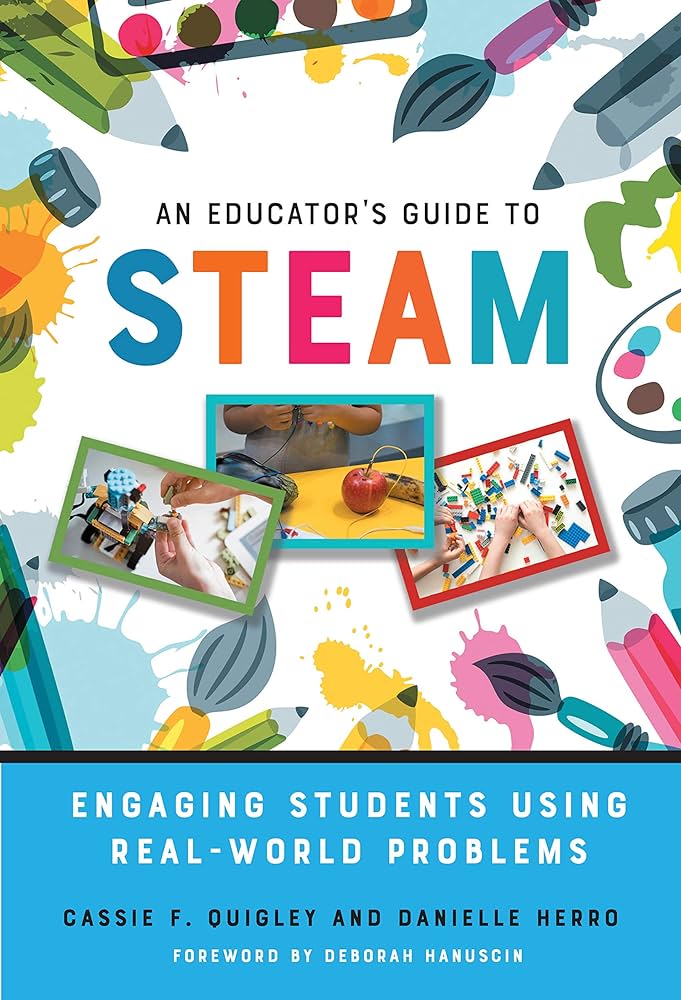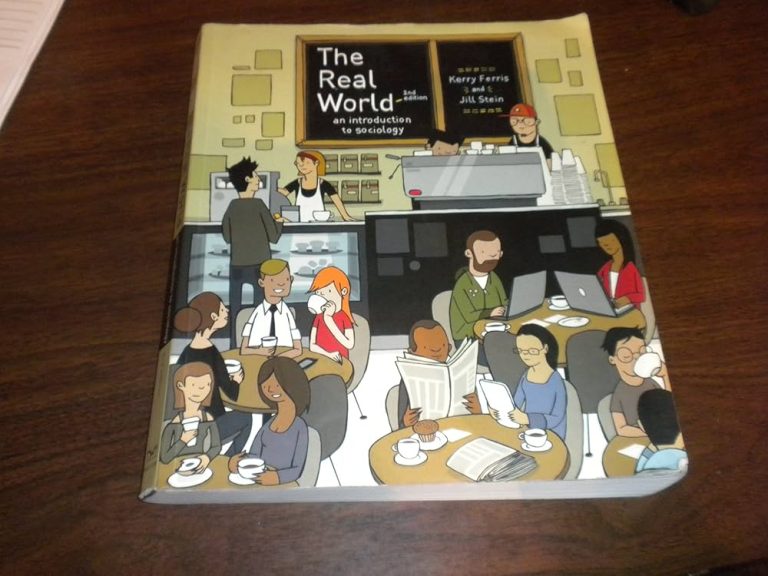An Educator’s Guide To Steam Engaging Students Using Real-world Problems
This guide provides educators with the tools and resources they need to effectively use Steam (Science, Technology, Engineering, Arts, and Mathematics) to engage students in real-world problem solving. Through a comprehensive review of best practices, instructional strategies, and resources, this guide will empower educators to confidently integrate Steam into their classrooms. The guide covers topics such as how to select the right Steam project, how to create an effective learning environment, and how to assess and evaluate student learning. With this guide, educators will be able to confidently and effectively use Steam to engage students in critical thinking and problem solving.
What is Steam?
Steam, or Science, Technology, Engineering, Arts, and Mathematics, is a modern, interdisciplinary approach to education that promotes critical thinking and problem-solving skills. It emphasizes creative and innovative thinking to develop students’ abilities to address real-world problems. By blending different fields of study, students are given the opportunity to gain an understanding of how various disciplines can be applied to their lives, work and communities. Schools and educators can use Steam to engage students in activities that help them develop the skills needed to solve real-world problems. This type of learning helps students understand complex concepts, gain confidence in their own ability to think critically, and develop a passion for learning. Through Steam activities, educators can help students identify their interests and strengths, while also enabling them to think outside of the box and be creative problem solvers.
Benefits of Using Steam in Education
When it comes to engaging students in real-world problem solving, STEAM (Science, Technology, Engineering, Arts and Mathematics) education offers a unique opportunity to excite and empower students. With a focus on interdisciplinary learning, STEAM allows educators to combine the fundamentals of STEM-based disciplines and the creative problem-solving abilities of the arts to create a more holistic approach to teaching. This approach emphasizes the importance of collaboration, creativity, and innovation, enabling students to explore and understand the world around them. When implemented successfully, STEAM can have a powerful impact on student learning, helping to foster an appreciation for problem-solving, critical thinking, and teamwork.
The benefits of STEAM are far-reaching. By utilizing real-world problems, STEAM encourages students to think outside the box and explore creative solutions. This approach can also help to develop students’ problem-solving, critical thinking, and communication skills which can then be applied to other areas of their lives, such as in the workplace or in college. Additionally, STEAM encourages collaboration between students, facilitating a safe and welcoming environment where students can work together to develop creative solutions. Finally, STEAM can be beneficial in cultivating a positive learning environment, where students are eager to learn and engage with the material.
Overall, STEAM provides a unique and valuable opportunity for educators to engage students in real-world problem solving. By combining the fundamentals of STEM and the creative problem-solving abilities of the arts, STEAM offers a holistic approach to teaching that can help to foster an appreciation for teamwork, collaboration, and critical thinking. With the right implementation, STEAM can have a powerful impact on student learning and open up a world of possibilities.
How to Get Started with Steam in Education
Incorporating STEAM (Science, Technology, Engineering, Arts and Mathematics) into the classroom can be a daunting task; however, it has the potential to be incredibly rewarding and engaging for students. By teaching students real-world problems through STEAM, educators can help students develop critical thinking skills and foster their passions to pursue a career in STEM-related fields.
To get started with STEAM, educators must first understand its core components and how they are interconnected. STEAM focuses on problem-solving through interdisciplinary approaches. Educators should be familiar with the fundamentals of each subject and be able to use them to solve real-world challenges.
Once educators have a good grasp of STEAM, they must then devise a plan for how to incorporate the subject into their classroom. To do this, educators should focus on hands-on activities that involve collaboration and problem-solving. Educators can also use online resources to supplement their lesson plans and provide students with further insight into the topics.
The most important thing to remember when incorporating STEAM into the classroom is to make sure that it’s engaging for students. Educators should create activities that challenge students and allow them to explore their passions. This will help ensure that students stay interested and motivated in the classroom and that they are learning valuable skills that can be applied in the real world.

Examples of Real-world Problems to Engage Students
Bringing real-world problems into the classroom is an effective way to engage students and connect their learning to real-life situations. As an educator, there are numerous examples of real-world problems that you can use to help your students think critically and apply their knowledge. These may include complex global issues, local environmental problems, or everyday challenges faced by individuals.
For example, global issues such as climate change, poverty, or human rights violations can be used to help your students understand the complexities of the world. You can also use local environmental issues such as air or water pollution to help them understand the effects of their own actions on their local environment.
Finally, you can use everyday challenges faced by individuals, such as budgeting or making healthy lifestyle choices, to help your students approach problem-solving in a more personal way. By using real-world problems to engage students, you can help bring their learning to life and give them the opportunity to think critically about complex topics.
Tips for Using Steam to Engage Students
Engaging students in the classroom is no easy task, especially in a technology-driven world. The use of Science, Technology, Engineering, Arts, and Mathematics (STEAM) can help teachers transform their classroom into an engaging learning environment. By using real-world problems and innovative technologies, educators can help students become more interested in the subject matter and develop a better understanding of the material. Here are a few tips for using STEAM to engage students in the classroom:
1. Incorporate technology: Incorporating technology into the classroom is a great way to make the subject matter more interesting. Developing projects that involve 3D printing, virtual reality, and robotics can bring the subject to life and help students understand the concepts more deeply.
2. Focus on real-world problems: Identifying real-world problems and having students develop solutions is an effective way to engage students. Working on projects that have relevance to their lives can help them stay focused and interested in the material.
3. Use hands-on activities: Hands-on activities can help students develop a deeper understanding of the material. Incorporating activities such as building model bridges, launching rockets, and coding can make the lessons more enjoyable and help students stay motivated.
With these tips, educators can use STEAM to engage students and help them develop a better understanding of the material. By using real-world problems and innovative technologies, educators can make the subject matter more interesting and help students gain a deeper understanding of the concepts.
Conclusion
Conclusion: As educators, we have an important role to play in creating meaningful learning experiences for students. By leveraging the power of STEAM, educators can create engaging learning environments that empower students to solve real-world problems and engage in critical thinking. This type of learning is not only beneficial for students, but it also helps educators create a more diverse and inclusive learning environment. By introducing STEAM-based activities in the classroom, educators can ensure that students have access to the resources and knowledge they need to become successful in the future.
FAQs About the An Educator’s Guide To Steam Engaging Students Using Real-world Problems
1. What types of students can benefit from using a Steam Engaging Students guide?
A: Any student who is interested in using real-world problems to further their understanding of mathematics, science, technology, engineering, and/or art can benefit from using an Educator’s Guide To Steam Engaging Students Using Real-world Problems.
2. Where can I find an Educator’s Guide To Steam Engaging Students Using Real-world Problems?
A: You can find an Educator’s Guide To Steam Engaging Students Using Real-world Problems through a variety of resources, including online bookstores, educational websites, and educational software programs.
3. What kinds of activities are included in the Educator’s Guide To Steam Engaging Students Using Real-world Problems?
A: The Educator’s Guide To Steam Engaging Students Using Real-world Problems includes activities such as simulations, virtual experiments, and problem-based learning. These activities are designed to help students gain a better understanding of the real-world problems they are studying and to apply their knowledge to real-world situations.
Conclusion
This Educator’s Guide to STEAM Engaging Students Using Real-world Problems provides an excellent resource for educators looking to engage their students in authentic and valuable learning experiences. The guide provides a comprehensive overview of STEAM education, from providing an understanding of the different components to offering concrete strategies for implementing these approaches in the classroom. It is an invaluable resource for educators seeking to provide their students with real-world problem-solving opportunities and an enjoyable learning environment.




